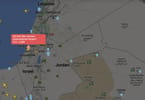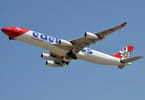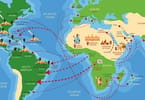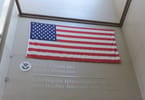The Costa stand at the CMT holiday trade fair in Stuttgart was empty. “Our thoughts are with the victims and their relatives, to whom we express our deepest sympathy,” said a sign on the table of the cruise company that owns the stricken Costa Concordia.
The company was putting all its efforts into a successful conclusion of the rescue operation, it said, as pictures were beamed round the world of the huge modern cruise ship on its side off the Italian coast with helicopters circling overhead and reports of chaos aboard.
The pictures jar with the image presented by glossy brochures put out by the sector, which has continued to boom through difficult economic times by selling the dream of idyllic cruises under blue skies. The images of the half-submerged Costa Concordia could put an end to that boom and ignite a new debate on safety aboard modern ships.
The European Cruiser Association (Eucras), which represents the interests of passengers and crew, sees the disaster off the Tuscan coast as a severe blow to the industry.
The accident is so far a mystery, given the modern navigational equipment aboard the large vessel (which was only delivered in 2006), Eucras President Stefan Jaeger said. Other officials were reluctant to comment, preferring to await more detailed information on the cause, while press reports suggest human error.
At the CMT trade fair in Stuttgart, there was talk of anything else over this week. “We asked ourselves how something like this could happen, given the modern technical equipment on board today,” one visitor said.
“You start asking yourself whether you will ever take a cruise again.” Susanne and Peter Baesler have already made their decision. “I wanted to book a trip with AIDA (another cruise company) in September. This accident is simply incredible. And if it happens to them, it could also happen to AIDA,” Susanne said.
But Andrea Eberle took a more sanguine view of things. “We’ve booked our trip for June and we’re going. Of course, you get goose pimples when you see that, but I think to myself: planes fall out of the sky and something could happen in a car any day.”
Torsten Schaefer, press spokesman for the DRV German travel association does not believe the sector will suffer long-term negative effects resulting from the disaster. Cruise ships are among the safest ways to travel, he says.
“Bad as this accident is, it just shows once again that we live in a world where anything can happen at any time.”
Growth in the cruise shipping sector has been on a steep upward path for years, with annual rates of increase of around 20 per cent. Where once the relatively high prices for years made cruises a niche market for the well off, the sector has long since drawn mass-market tourists.
The cruises on offer have expanded dramatically over recent years, offering relatively inexpensive holidays on so-called “club ships” to travellers on a budget, alongside the expensive luxury cruises.
An increasing number of young people are taking advantage of this.
In Germany, where cruises are increasingly popular, 1.2 million passengers booked a berth over the course of 2010, according to DRV figures, and the sector has turned into a market worth billions of dollars.
AIDA and Hapag-Lloyd, two major cruise companies achieved turnover of more than $2.5 billion in 2010, and sector experts are predicting even better times ahead.
“The German market is still very undeveloped,” Schaefer says, comparing it with the US and UK, where cruises have long been popular among public, with considerably higher percentages of the population going on a cruise at some point.






















